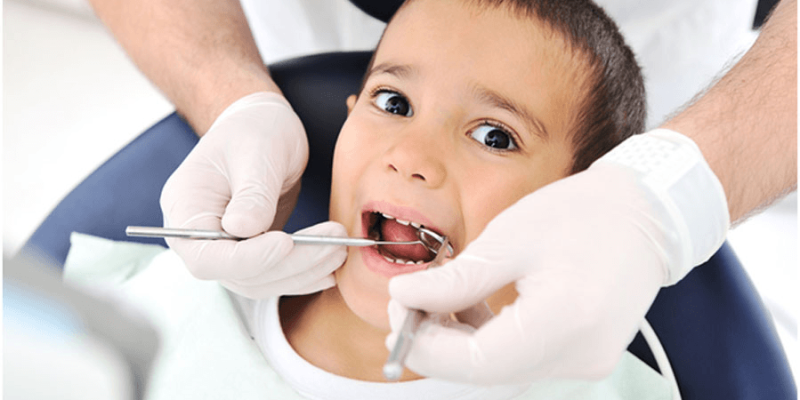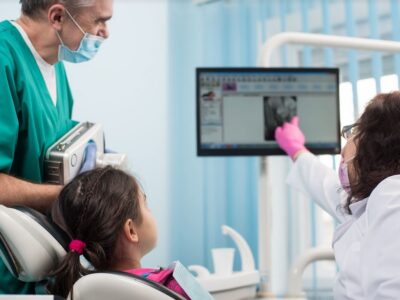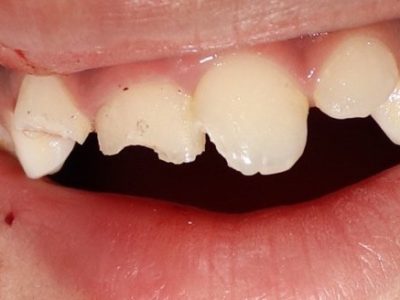I. Definition
Boucher OC defined an oral habit as a tendency towards an act or behavior that has become a repeated performance, which is relatively fixed, consistent, easy to perform, and almost automatic.
Oral habits can include behaviors such as thumb sucking, tongue thrusting, lip biting, nail-biting, and teeth grinding. These behaviors can have a negative impact on oral health, leading to issues such as malocclusion, tooth wear, and temporomandibular joint disorders (TMJ).
Understanding the definition of oral habits can help dental professionals identify problematic behaviors in patients and develop appropriate treatment plans. Treatment for oral habits may involve behavioral interventions, such as habit reversal therapy, and/or appliance therapy, such as orthodontic devices or mouthguards, to help prevent further damage to the teeth and surrounding structures.
Early detection and intervention are crucial in managing oral habits, as they can result in long-term consequences if left untreated. By taking a proactive approach to managing oral habits, dental professionals can help their patients achieve optimal oral health outcomes.

II. Classification of Oral Habits
A. Useful and Harmful Habits (James 1923)
Useful habits include correct tongue posture, proper respiration, and deglutition, which contribute to optimal oral health. On the other hand, harmful habits such as mouth breathing and tongue thrusting can lead to malocclusion and other oral health problems.
B. Compulsive and Non-Compulsive Habits (Finn 1987)
Compulsive habits are acquired fixations in children that are difficult to modify, while non-compulsive habits can be changed through behavior modification.
C. Meaningful and Empty Habits (Klein 1971)
Meaningful habits have deep-rooted psychological problems associated with them, while empty habits are relatively harmless and can be treated easily.
III. Thumb and Digit Sucking
A. Definition and Theories of Causative Factors
Thumb and digit sucking involve placing the thumb or fingers into the mouth. Theories of causative factors include the classic Freudian theory, oral drive theory, learning theory, and rooting reflex.
B. Grading of Thumb Sucking
Thumb sucking can be graded into four types based on the extent and contact of the thumb in the mouth.
C. Possible Etiological Factors
Various factors such as parental occupation, working mother, number of siblings, order of birth, social adjustments, feeding practices, and age of the child can contribute to thumb sucking habits.
D. Diagnosis
Diagnosis is based on a thorough history of feeding patterns, frequency, intensity, duration of the habit, presence of other related habits, and emotional status. Clinical examination involves assessing the finger appearance, lip posture, and intraoral examination for dentoalveolar structure and effects on the maxilla and mandible.
E. Management Options
Preventive treatment focuses on natural feeding and discontinuation of the habit. Psychological therapy involves positive approaches and mirror observation. Chemical treatments using bitter or sour substances have limited success. Mechanical therapy includes extraoral and intraoral approaches such as adhesive tapes, thumb guards, palatal cribs, and anti-thumb sucking appliances.
IV. Tongue Thrusting
A. Definition and Classification
Tongue thrusting is the forward movement of the tongue tip between the teeth during swallowing and speech sounds. It can be classified based on etiology (physiologic, habitual, functional, anatomic) and clinical manifestations.
B. Etiology of Tongue Thrust
Various factors, such as retained infantile swallowing, upper respiratory tract infections, functional adaptability, induced habits, hereditary factors, tongue size, and oral trauma, can contribute to tongue thrusting.
C. Types and Clinical Features
Simple tongue thrust is characterized by normal tooth contact during swallowing but can lead to proclined upper anteriors and anterior open bite. Complex tongue thrust involves teeth apart swallow and can result in poor occlusal fit and posterior open bite in lateral tongue thrust.
D. Diagnosis
Diagnosis is based on a comprehensive history, examination of tongue and lip functions, and clinical evaluation. Observing the tongue during swallows and evaluating the lip posture can provide valuable diagnostic information.
E. Treatment Modalities
Treatment options for tongue thrusting include myofunctional therapy to correct tongue posture, exercises such as the 4S exercises, lip exercises, and mechanotherapy using removable or fixed appliances to restrain tongue movement.
V. Mouth Breathing
A. Definition and Classification
Mouth breathing refers to habitual respiration through the mouth instead of the nose. It can be classified into anatomic, obstructive, and habitual etiologies.
B. Etiology of Mouth Breathing
Anatomically short upper lip and nasal obstruction due to enlarged turbinates, deviated nasal septum, allergies, or nasal polyps are common causes of mouth breathing.
C. Clinical Features and Diagnosis
Clinical features of mouth breathing include a long narrow face (adenoid facies), a short and flaccid upper lip, and anterior marginal gingivitis. Diagnosis is based on a thorough history, examination, functional examination, mirror test, and water holding test.
D. Management
Management of mouth breathing involves consultation with an ear, nose, and throat (E.N.T.) specialist to address any underlying nasal obstruction. Interception of the habit can be achieved through deep breathing exercises, lip exercises, and the use of appliances.
VI. Bruxism (Teeth Grinding)
A. Definition and Classification
Bruxism is the habitual grinding of teeth when an individual is not chewing or swallowing. It can be classified into daytime (diurnal) and nighttime (nocturnal) bruxism.
B. Etiology of Bruxism
Bruxism can be caused by occlusal discrepancies, psychological factors, genetics, and occupational factors.
C. Diagnosis
Diagnosis is based on a thorough history, examination, and assessment of clinical manifestations. Patients may experience muscular tenderness, occlusal disharmony, and temporomandibular joint issues.
D. Treatment Options
Treatment options for bruxism include occlusal splints, occlusal adjustments, restorative procedures, psychotherapy, habit awareness, drugs, biofeedback, electrical methods, acupuncture, and orthodontic correction.
VII. Lip Habits
A. Definition and Types of Lip Habits
Lip habits involve manipulation of the lips and perioral structures. They can include lip licking or wetting of lips by the tongue and lip sucking.
B. Etiology
Malocclusion, habits, and emotional stress can contribute to lip habits.
C. Management Options
Management options for lip habits include the use of a lip bumper, oral screen, or lip protector to discourage the habit.
VIII. Nail Biting Habit
A. Prevalence and Age Distribution
Nail biting is a common habit in adolescents and adults, with an increase during adolescence.
B. Diagnosis and Clinical Features
Diagnosis is based on clinical examination, specifically looking for nail inflammation and irregular nail margins. Dental effects such as crowding, rotation, and attrition of incisal edges may also be present.
C. Management Strategies
Management strategies for nail biting include patient awareness, avoiding negative approaches, addressing underlying emotional factors, using reminder techniques, and applying nail polish or using cotton mittens to discourage the habit.
IX. Self-Injurious Habits
A. Definition and Classification
Self-injurious habits involve behaviors where individuals deliberately inflict damage upon themselves. They can be classified into organic and functional habits with complex etiologies.
B. Clinical Features
Clinical features of self-injurious habits include biting of fingers, knees, shoulders, frenum thrusting, picking of gingiva, and insertion of sharp objects into the oral cavity.
C. Treatment Approach
Treatment of self-injurious habits involves psychotherapy, palliative treatment, mechanotherapy, vestibular screens, restraints, and protective padding.
X. Conclusion
Early detection and intervention of oral habits are essential in dental practice. Successful treatment depends on patient cooperation and comprehensive strategies that address the underlying causes and provide appropriate management options for each specific habit. By understanding the classification, etiology, clinical features, and available treatment modalities, dental professionals can effectively identify and manage oral habits to promote optimal oral health outcomes for their patients.
References


















Comments